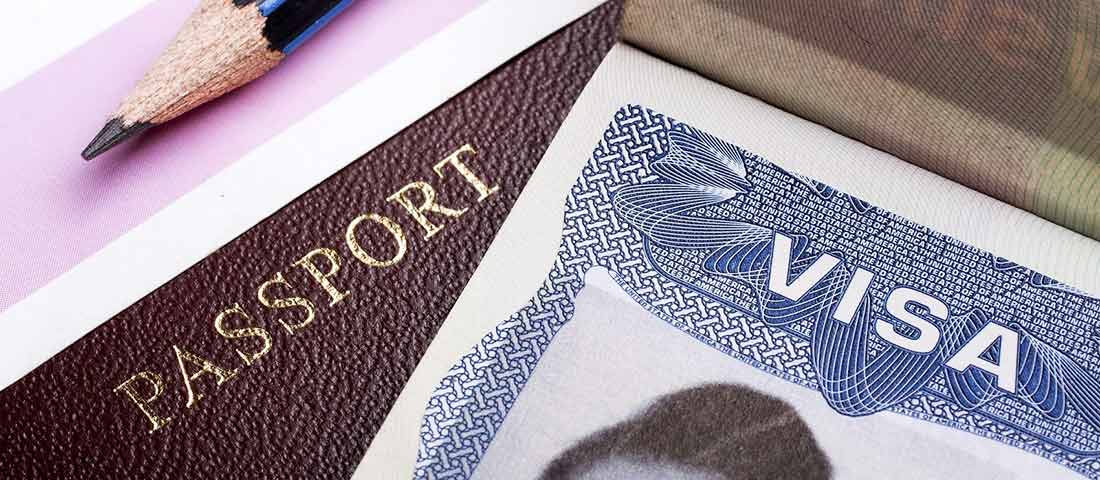
Navigating through the K1 fiancé visa process can be intricate, with various stages and entities involved. This guide aims to demystify the processing times, providing a clear and in-depth understanding of each step involved. The K1 visa is crucial for U.S. citizens who wish to bring their foreign fiancés to the United States, and understanding the processing times is key to planning your journey together.
K1 Visa Processing Duration
- Estimated Time Frame: Typically, the entire process for a K1 fiancé visa takes between 12 to 18 months. This duration encompasses the time taken by the U.S. Citizenship and Immigration Services (USCIS), the National Visa Center (NVC), and the U.S. embassy or consulate in the foreign fiancé’s country.
Step-by-Step Breakdown of Process
1. USCIS Processing
Let’s delve deeper into the USCIS processing stage of the K-1 fiancé visa, focusing on Form I-129F, its requirements, and the reasons behind the varying processing times across different service centers.
Form I-129F: Petition for Alien Fiancé
- Purpose: This form is used by a U.S. citizen to petition USCIS to recognize a foreign individual as their fiancé, allowing them to travel to the U.S. for marriage.
- Required Documents: Along with the completed form, the petitioner must submit evidence of their relationship, proof of meeting in person within the last two years (unless exempt), and proof of the petitioner’s U.S. citizenship.
- Filing Fee: As of the last update in October 2023, there is a filing fee associated with Form I-129F, which must be paid for the application to be processed.
Varying Processing Times Across USCIS Service Centers
- Multiple Service Centers: USCIS has several service centers across the country, each responsible for processing certain types of applications, including Form I-129F.
- Workload and Staffing: The processing times vary significantly across these centers due to differences in workload, staffing levels, and operational capacities.
- Example of Variations: For instance, the Nebraska Service Center might process Form I-129F in about 5 months, while the Potomac Service Center could take up to 19 months. These variations are normal and depend on the current conditions at each center.
How to Check Processing Times
- USCIS Website: Applicants can check the estimated processing times for Form I-129F at each service center on the USCIS website.
- Receipt Notice: After submitting Form I-129F, the petitioner receives a receipt notice with a unique case number, which can be used to check the status of the application online.
What Happens After USCIS Approval?
- Transition to NVC: Once USCIS approves the petition, the case is forwarded to the National Visa Center (NVC), marking the next phase in the K-1 visa application process.
By understanding the intricacies of the USCIS processing stage and preparing a complete and accurate application, petitioners can navigate the K-1 fiancé visa process more smoothly. The waiting time, while variable, is a necessary step in ensuring that all applications are thoroughly reviewed and that the legal requirements for the K-1 visa are met.
2. NVC Processing
Transition to the National Visa Center (NVC)
- Role of NVC: Once the U.S. Citizenship and Immigration Services (USCIS) approves the Form I-129F, the case is forwarded to the NVC. The NVC plays a crucial role in processing the visa application before it is sent to the U.S. embassy or consulate in the foreign fiancé’s country.
- Case Creation: The NVC creates a case for the foreign fiancé and assigns a unique case number, which is used to track the application throughout the process.
Form DS-160: Online Nonimmigrant Visa Application
- Purpose: This form is required for the foreign fiancé to apply for the K-1 visa. It collects personal information, details about the relationship, and other relevant data needed to process the visa application.
- Filing Process: The Form DS-160 must be completed and submitted online. After submission, the applicant must print the confirmation page, which is required for the visa interview.
- Supporting Documents: The foreign fiancé must also gather and submit various supporting documents, including proof of the relationship, passport photos, and a valid passport.
NVC Processing Times
- Case Creation Time: As of the last update, it takes the NVC around 17 days to create a case.
- Case Review Time: Following case creation, the NVC takes approximately 53 days to review the case and ensure that all required documents are in order.
- Total Time at NVC: The entire process at the NVC takes around 70 days, though this can vary depending on the specific circumstances of each case.
Preparing for the Visa Interview
- Scheduling the Interview: Once the NVC has processed the case, the foreign fiancé will be scheduled for a visa interview at the U.S. embassy or consulate in their country.
- Medical Examination: Prior to the interview, the foreign fiancé must undergo a medical examination by an approved panel physician.
- Interview Preparation: It is crucial for the foreign fiancé to prepare for the interview, ensuring they understand the questions they might be asked and have all required documents on hand.
After the Visa Interview
- Visa Approval: If the visa is approved during the interview, the foreign fiancé will receive their K-1 visa, allowing them to travel to the U.S. and marry their U.S. citizen petitioner within 90 days of arrival.
- Adjustment of Status: After marriage, the foreign spouse can apply for an adjustment of status to become a permanent resident.
By understanding the NVC processing times and the requirements for Form DS-160, applicants can better prepare for this crucial stage of the K-1 fiancé visa process, ensuring a smoother journey towards uniting with their loved one.
3. Factors Influencing Processing Times
Processing Delays:
- Backlogs: The USCIS and NVC can experience backlogs due to a high volume of applications, leading to longer processing times.
- Pandemic Impact: The COVID-19 pandemic has significantly impacted immigration processes worldwide, causing delays due to office closures, reduced staffing, and increased safety measures.
- Security Checks: Enhanced security and background checks for applicants can contribute to delays, as these processes are thorough and can be time-consuming.
Staffing and Budget Issues:
- Resource Allocation: The availability of staff and budget allocations at USCIS service centers and U.S. embassies or consulates play a crucial role in processing times. Any shortages or reallocations can lead to longer waiting periods.
- Training and Experience: The level of training and experience of the staff handling the applications can also impact processing times, as more complex cases might require additional review and expertise.
Application Complexity:
- Case Specifics: The specifics of an individual case, including any legal complexities, previous immigration history, or issues related to the required documentation, can influence processing times.
- RFEs (Requests for Evidence): If USCIS requires additional information or clarification on certain aspects of the application, they will issue an RFE, which can prolong the processing time as the applicant needs to respond with the necessary documentation.
External Factors:
- Country-Specific Issues: The country from which the foreign fiancé is applying can also play a role, as some countries might have longer wait times for visa interviews, additional administrative processing, or other country-specific challenges.
- Global Events: Political instability, natural disasters, or other global events can impact visa processing times, as they might affect the operations of U.S. embassies, consulates, or USCIS service centers.
Understanding these factors and being prepared for potential delays can help applicants navigate the K-1 fiancé visa process more smoothly, setting realistic expectations for the journey ahead.
4. Monitoring Your Application
- Case Status Online: USCIS provides an online tool where you can check the status of your application using the receipt number provided in your application receipt notice. This tool provides real-time updates on the status of your application.
- Receipt Notice: After filing Form I-129F, you will receive a receipt notice from USCIS, which includes a unique case number. This number is crucial for tracking your application’s progress.
- National Visa Center (NVC): Once USCIS approves your petition, your case is forwarded to the NVC. You will receive a notice from the NVC with your case number and invoice ID number, which you can use to check your case status on the Department of State’s Consular Electronic Application Center (CEAC) website.
If Your Application Is Outside Normal Processing Times:
- Service Request: If you notice that your case is taking longer than the posted processing times on the USCIS website, you can submit a service request online. This request can help in getting an update on your case or potentially expedite the process.
- Contact USCIS: You can contact USCIS directly to inquire about the delay. They have a toll-free number available for customer service inquiries.
- Congressional Inquiry: In some cases, reaching out to your local congressional representative’s office can help. They can make an inquiry on your behalf, which might expedite the resolution of any issues causing the delay.
Preparing for Potential Delays:
- Set Realistic Expectations: Understanding that the K-1 visa process can be lengthy and that delays can occur will help in setting realistic expectations.
- Keep Documents Organized: Ensure that all your documents are well-organized and readily available. This can be crucial if USCIS or the NVC requests additional information.
After Approval:
- Visa Interview: Once your case is processed and approved, the foreign fiancé will be scheduled for a visa interview at the U.S. embassy or consulate in their country.
- Final Steps: After a successful visa interview, the K-1 visa will be issued, allowing the foreign fiancé to travel to the U.S. and marry their U.S. citizen petitioner within 90 days of arrival.
By actively monitoring your application and being prepared to take action if necessary, you can ensure that you are doing everything possible to facilitate a smooth K-1 fiancé visa process.
Conclusion
This guide provides a detailed and clear understanding of the K-1 fiancé visa processing times, helping applicants navigate through the process with ease.
